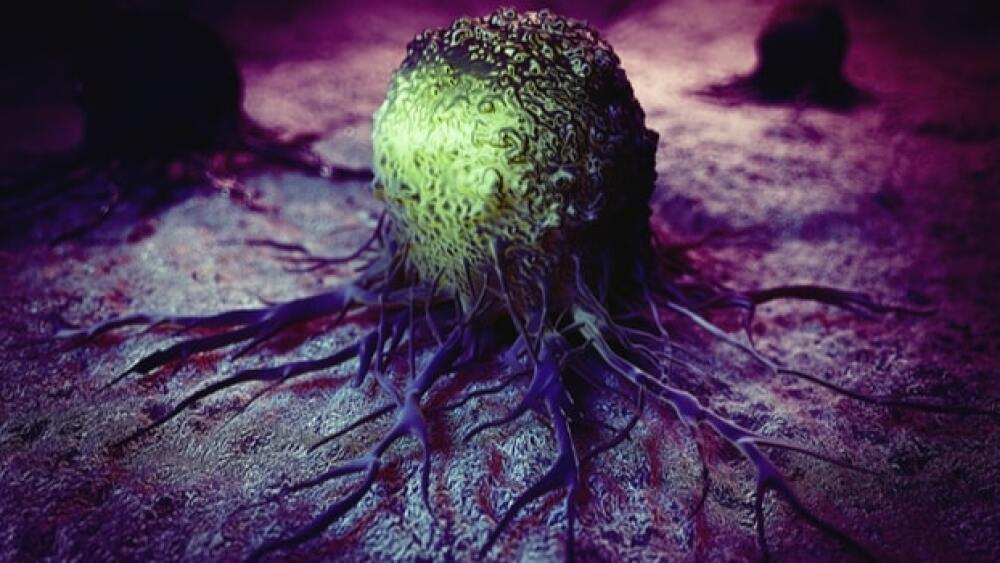The three posters OncoMyx Therapeutics presented at the virtual American Association for Cancer Research (AACR) Virtual Annual Meeting on April 10th provided the first data indicating its myxoma virotherapy approach to oncolytic therapeutics.
The three posters OncoMyx Therapeutics presented at the virtual American Association for Cancer Research (AACR) Virtual Annual Meeting on April 10 provided the first data indicating its myxoma virotherapy approach to oncolytic therapeutics:
- Modulates anti-tumor immune response pathways
- Produces anti-tumor efficacy in lung cancer
- Expresses functional proteins from transgenes in a dose- and time-dependent manner
The posters (available on the company’s website) supported two of the company’s first two myxoma virotherapy clinical programs, OM101 – a multi-armed checkpoint inhibitor combination – and OM102, which is built off the OM101 program. Both focus on solid tumors and are designed to create broad therapeutic options with long dosing windows in the hopes of creating durable responses. If successful, this could expand immunotherapy beyond the 5-15% of cancer patients currently eligible.
“The mechanisms that we are targeting in OncoMyx’s lead program are related both to tumor cell-intrinsic signaling pathways and to types of immunosuppression commonly found to blunt the anti-tumor immune response,” Leslie L. Sharp, Ph.D., CSO, and Steve Potts, Ph.D., MBA, co-founder and chief executive officer of OncoMyx, told BioSpace in an interview.
As the AACR “abstract 1920” pointed out, “Myxoma is a large double-stranded DNA poxvirus suitable for oncolytic virotherapy. (It) is engineerable to carry multiple transgenic payloads, and is not pathogenic to humans. Multi-armed myxoma produces multiple, biofunctional transgenes and a dose and time-responsive manner.”
Taking that further, another abstract, 1921, noted that vMYX-IL-12/Dec – a virotherapy multi-armed with interleukin 12 (IL-12) and decorin (Dec) – upregulates interferon-α (IFN-α), IFN-γ, and IL-12 response pathways, which are associated with anti-tumor immune response. Previous research showed the therapy modulated tumor infiltrating lymphocytes, increasing the CD8/Treg and M1/M2 macrophage ratios, to favor anti-tumor immunity, and that the therapy was efficacious with immune checkpoint inhibitors.
The results presented at AACR were obtained from research involving preclinical models of cancer after either intravenous (IV) or intratumoral (IT) injections. When injected intravenously, the myxoma virus produced minimal anti-myxoma antibodies in vivo. Predictions based on in silico modeling suggest it will be safe in humans at the expected doses.
What’s particularly notable about these programs is that OncoMyx targets cancer mechanisms rather than mutations. As Sharp and Potts explained, “The mechanisms we are targeting in our lead program are related both to tumor cell-intrinsic signaling pathways and to types of immunosuppression commonly found to blunt the anti-tumor immune response.
“By targeting these mechanisms, we expect we can select tumor types and patients that will be responsive to OncoMyx’s multi-armed myxoma therapeutic candidates. By better matching the susceptibility of the tumor to the oncolytic activity of the myxoma virus and the activity of the arming payloads, we anticipate that we may achieve higher efficacy in patients where those mechanisms are important to the biology of the tumor,” Sharp and Potts said.
OncoMyx’s pipeline supports multiple cancer types. Initial work focuses on solid tumors, while programs in the discovery phase also include multiple myeloma and acute myeloid leukemia.
“By matching the transgenic arming payloads with the tumor biology of specific diseases and patient subsets, we hope to provide new therapeutic options for safe and effective cancer therapies,” Sharp and Potts reiterated.
To help ensure that the results from these studies translate well to humans, OncoMyx has applied multiple translational approaches to support moving its platform and individual programs toward the clinic.
For example, OncoMyx researchers laid that foundation by investigating what makes cancer cell lines susceptible to myxoma’s oncolytic activity and how that may relate to transgene expression. Then, Sharp and Potts said, “We have investigated the immunomodulatory activity of both the viral backbone and the transgenes in multiple different types of models appropriate for investigation of the immune response. We also have included some advanced mathematical modeling to help us understand how to translate the in vitro and in vivo effects that we see in mouse and human model systems to make predictions of the activity in humans.
“This preclinical work gives us a strong chance of selecting the right combination of myxoma with multiple transgenic arming and the right patient populations to see activity in clinical studies,” Sharp and Potts said.
OncoMyx is concentrating now on moving its lead candidates through the Investigational New Drug (IND)-enabling process toward clinical trials, including GMP manufacturing and toxicology studies.






